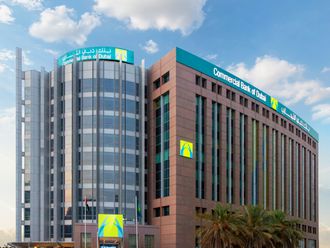While a few Abu Dhabi-based banks reported declining NPLs in the third quarter, the overall sector has shown a surge in provisions. According to the UAE Central Bank, specific provisions made by UAE banks rose 13.8 per cent to Dh50.4 billion year-on-year.
Emirates NBD, the country's largest bank by assets, reported an impairment charge of Dh1.57 billion in the latest period, driven by a specific provision of Dh950 million made in relation to the Dh4.7 billion exposure to Dubai Holding. The bank's NPL ratio is expected in the range of 13-14 per cent in 2011, but to increase in the next two years to perhaps 16 per cent, according to the bank.
National Bank of Abu Dhabi (NBAD) reported net impairment charges of Dh321 million for the third quarter, its provision expense on the higher side, according to Naveed Ahmed, Senior Financial Analyst at Global Investment House, whereas Abu Dhabi Commercial Bank (ADCB) and First Gulf Bank (FGB) showed a declining trend in NPLs.
In the third quarter ADCB's net impairment allowances amounted to Dh514 million, down 22 per cent year-on-year, while in the year to date they were 30 per cent lower at Dh1.84 billion. For FGB the NPL ratio after excluding Dubai World exposure outturned at 3.4 per cent, from 3.7 per cent at end-2010.
Ongoing corporate deleveraging
Moody's rating agency says its negative outlook for the banking system is related to ongoing corporate deleveraging at some large government-related borrowers, and argues that Abu Dhabi banks are the better positioned. "Higher oil revenues are translating into deposit growth, whilst on the asset side key infrastructure projects are also resuming slowly," said Khalid Howladar, senior credit officer in Dubai. By contrast, highly leveraged Dubai government-related entities (GREs) restructuring their loans will continue to weigh heavily on Dubai-based banks.
"We expect that NPLs will peak next year in Dubai at around 13-15 per cent, and this year in Abu Dhabi at 8-10 per cent," said Nicolas Charnay, associate analyst with Moody's.
Additionally, crisis in Europe and the absence of Western banks from the refinancing market could mean troubled GREs seeking funding from local banks, weakening their balance sheets further, confirmed Jean-Michel Saliba, an economist with Bank of America Merrill Lynch.
Pressure on liquidity
Analysts believe there could be pressure on liquidity in the local system due to the high cost of funds in international bond markets and lacklustre growth in customer deposits, up 1.7 per cent in the first nine months of 2011. "There has been a slowdown in liquidity growth across [Saudi Arabia, Qatar and the UAE]. However, it appears to have been the sharpest in the UAE," said Khatija Haque, GCC chief economist at Emirates NBD.
Tighter liquidity is likely to impact overall lending, expected to grow by 3-5 per cent this year. "Credit sluggishness and downward loan-deposit ratios stem from banks' lingering risk aversion, and tighter prudential regulation on real estate and consumption credit," said Masood Ahmad, Director of the International Monetary Fund's Middle East and Central Asia Department.
Analysts believe the outlook for loan growth next year is better because of relatively cleaner balance sheets, a substantial decline in the loans to deposits ratio, and high capitalization levels.
The writer is Deputy Business Editor, Gulf News










